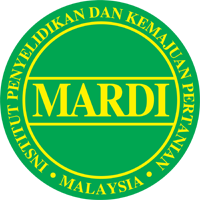Nur Diyana, A.1 , Koh, S. P.1*, Mazlan, M. T.2 and Chin, N. L.2
Abstract
Propolis is a complex compound consisting of flavonoids, phenolics, terpenes, aromatic compounds, volatile oils and resin which contribute to different pharmacological properties. This study aims to optimise sonication-assisted extraction parameters in the production of bioactive metabolites with high antioxidant properties from propolis of stingless bees (Heterotrigona itama) using response surface methodology (RSM) comprising of three independent variables (amplitude 30 – 70%, cycle 0.3 – 0.7 unit and time, 20 – 40 min) with five levels. Antioxidant activities were analysed using a 1,1-diphenyl-2-picrylhydrazyl (DPPH) free radical scavenging activity assay, ferric reducing antioxidant power (FRAP) assay and total phenolic content (TPC). Comparison between the predicted and experimental value from central composite rotatable design (CCRD) optimisation procedures showed the best fitting model was a reduced cubic modified model with a good correlation with R square of 94.2%, 97% and 93.3% for DPPH, FRAP and TPC responses, respectively. The optimum sonication parameters for the production of propolis extract with the highest antioxidant activities (based on a combination of DPPH, FRAP and TPC responses) were determined with the amplitude of 52.95%, cycle of 0.52 unit and time of 31.86 min.
Keywords: Stingless bee, Heterotrigona itama, green technology, response surface methodology, antioxidant








